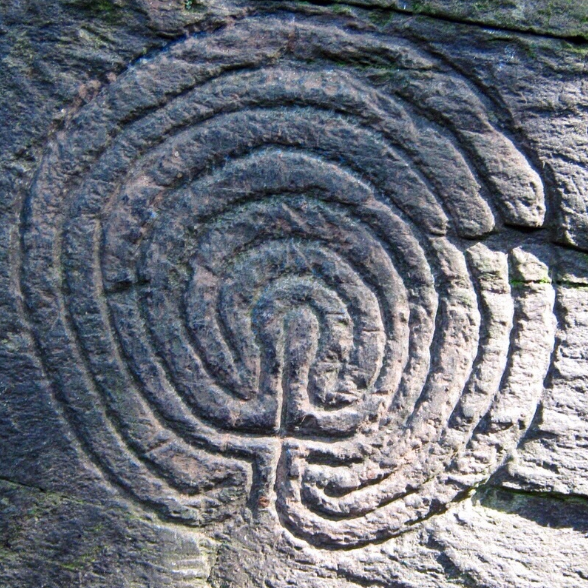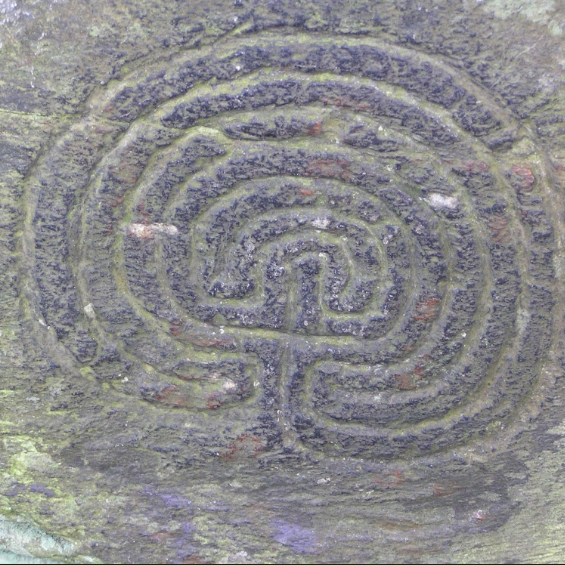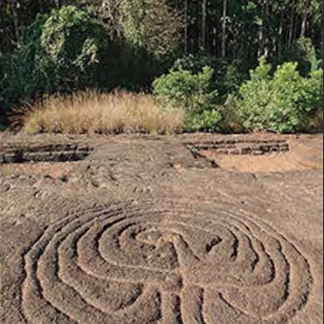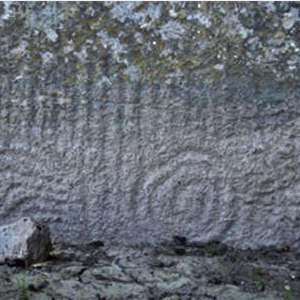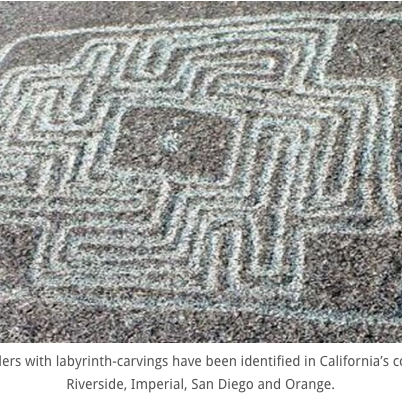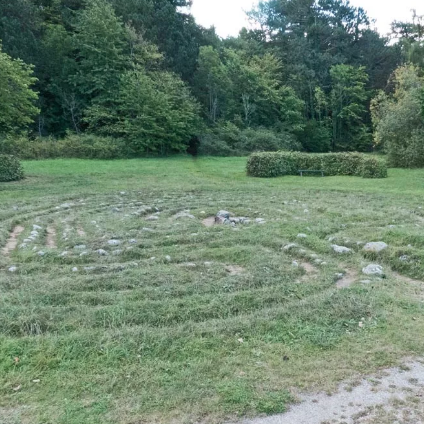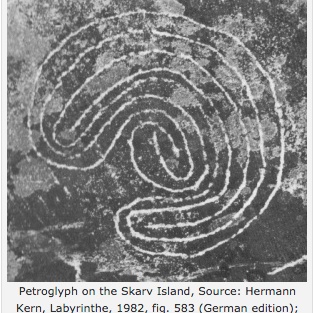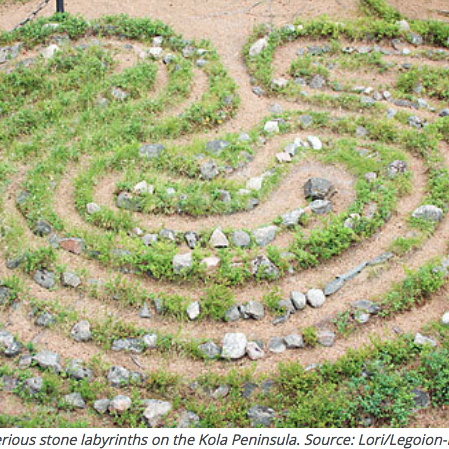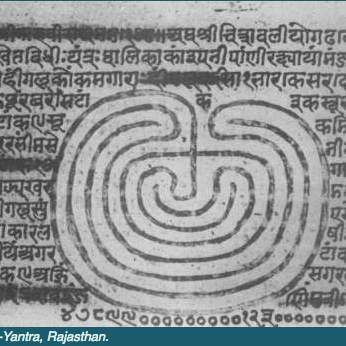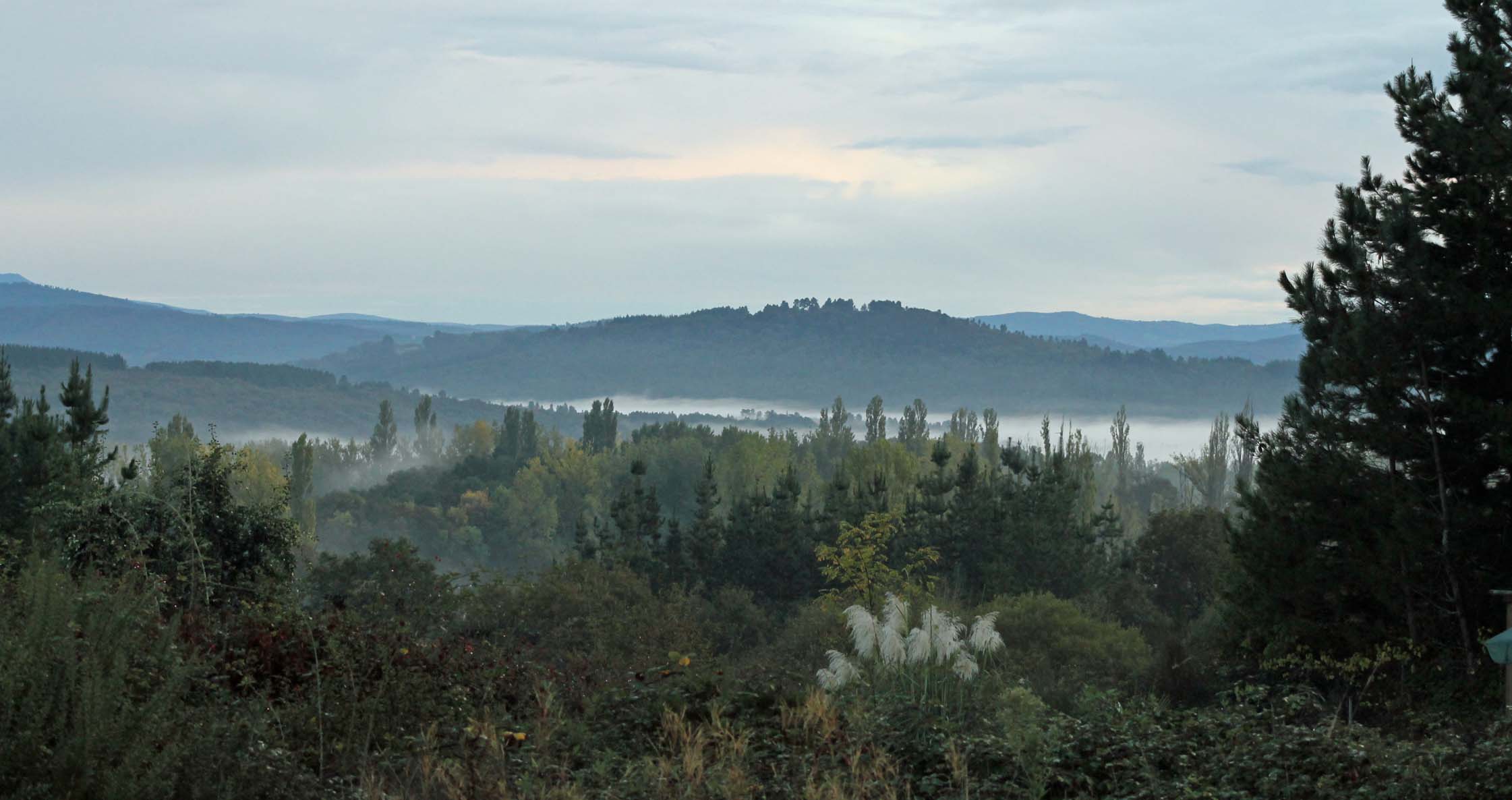
Ophiussa
Ophiussa: the Land of Serpents
Ophiussa, is the name the ancient Greeks gave to parts of Northern Portugal and Galicia. It means Land of the Ophis, ophis being the Greek word for serpent. Very little can be known about how the people actually lived in those archaic times, maybe 10,000 years ago, perhaps even longer, but they were pagans for sure – white indigenous European pagans, to be specific. There are no contemporaneous written records, just shy glimpses from much later Roman sources, such as the poem Ora Maritima (The Sea Coast) by Rufus Avienus Festus written in the 4th century AD and said to be drawn from a sailing manual from around 600BCE called the Massaliote Periplus. The existence of the Massaliote Periplus is questioned by some scholars and the geography might be sketchy, but the reference to the Oestrymnis has been confirmed.
The poem was written in Latin and here is the translation of the relevant reverse:
Back after the places we spoke of above,
there opens a great bay filled with water,
all the way to Ophiussa.
Back from the shore of this place,
to the inland water, through which I said before that the sea insinuates itself
through the land, and which they call Sardum,
the journey extends for seven days on foot.
Ophiussa extends its side, being as large
as you hear the Island of Pelops
lying in the territory of the Greeks is.
This land was originally called Oestrymnis
by those who inhabited the Oestrymnian countryside and region,
much later the serpent chased away the inhabitants
and gave the now empty land its name.
This is what Wikipedia has to say about the Oestrymnis, known locally as the Oestrimnios:
“Paleolithic to the Romans
The area around the town has been inhabited since long before the Roman occupation, as testified by excavations of sites dating to the Bronze Age. The history of Monforte de Lemos goes back to the Paleolithic, and its first known inhabitants were the Oestrimnios. This period was called the “castrexa” or the culture of the forts, typical of the Celtic tribes. The tribe that populated Monforte was known as the Lemavi tribe, and the first written references to them date from the Roman historians Pliny the Elder and Strabo between 600 and 900 BC. The Lemavi were centered on the hill of San Vicente. The word “Lemos,” which also gives name to the region, known as Terra de Lemos, would be a voice of Celtic origin meaning “moist, fertile soil” and seems to connect with the root Galician word of “lama” or in English “slime.”
It is believed that during pre-history, Monforte, now a valley, was a large lagoon, and evidence of this is found in the hard red clay by digging a few feet into the floor of the city. Likewise, its river, el Cabe, was already known for its ferrous properties and much appreciated at the time of tempering swords of Celtic warriors, who came from all corners to take comfort with its excellent properties. The settlement of the Lemavis was the Castro Dactonium, whose actual location has long been disputed, although early medieval sources point to its likely location on San Vicente do Pino the main town which was the origin of today’s Monforte. “Dactonium, quod dicitur pinus” (Dactonio, which they call Pine), one of the documents states which supports this version. The theory has been recently reinforced by the discovery of remains of Castraña houses on the slopes of the mountains.”
This is of special interest to me because I live in the Terra de Lemos, just 500M from the Rio Cabe, but we didn’t know any of this before we moved here. We thought we were following our instincts when we moved here in 2012, but I now think it’s more likely that we were tuning into Gaia-Sophia’s ‘homing beacon’. Every point on this planet has its unique electromagnetic field and each one of us generates a unique electromagnetic frequency which causes us to be drawn to some areas and repelled by others; in some cases we can become overwhelmed by the places we are drawn to and in others there is an interaction in which both the earth and the human field enhance each other – I call that regeneration. If you can find the place in which you feel more vital, you can be sure that you are bringing that vitality and capacity for regeneration to that location and all its inhabitants too. This interaction is known to take place between individuals, see the work of Valerie Hunt on the human bioenergy field and The HeartMath Institute on coherence, but it also occurs between humans and other creatures and with the planet itself. My intention is to learn more about this interaction, driven by my awareness of just how essential it is for our survival in these turbulent times, is what drives me to discover the story of this land.
This is not so easy through conventional means. Everyone knows that history books are written by the victors and ultimately, over hundreds of years, the Romans and their converts, as vectors for the desert mind-control parasite we call religion, systematically wiped out the pre-existing culture of Europe and much of the evidence that it even existed. It continues by so many more means, today.
The Celtic nation did not operate under the centralized leadership model of empires, but was probably the most stable and successful civilization that has ever emerged from these lands. I feel there is much of value to be rediscovered, relearned and reimagined from how we lived back then, to recover what has been destroyed but remains in the phylogenetic memory of the people.
Translation from The Unveiled [A] Moura, by Dr A. Pena, Dean of the Galician Institute for Celtic Studies
“As in Ancient Egypt, and from the Neolithic to the Iron Age, tombs (mámoas, ‘mounds’) throughout Europe have been plundered as part of what might be considered “The second oldest profession in the world” (Steuer, 1979) sometimes as soon as the day after the burial. Today it is the work of archaeologists, but with the goal gaining knowledge of our past the cases of pillaging include the excavation of 890 tombs in the Hallstatt necropolis over the course of 17 years, or the 1846 disinterment of 19.490 objects by mining supervisor Johan Georg Ramsauer.
But the pillaging of Hallstatt is just an anecdote compared to what has occurred in Galicia. The priest Pedro Vázquez de Orjás, Lord of the Couto de Recemil, in Lugo (Martinez Salazar, BRAH III, 1909, pp 218-9), obtained the Royal Warrant in 1609 from king Philip III to open tombs and remove the treasures of the “Galli-Greek gentry”. His plundering involved over three thousand chambers.”
Much of what I’ve discovered about Ophiussa comes from the natural history of the land, its topography and interaction with the people and animals that live here. Snakes have shown up as omens, with exquisite timing on numerous occasions. I’ve seen the dancing, multi-headed snake in healing ceremonies and also the great serpent rise out of the ground, pick up a man and throw him into the lap of a woman, who definitely did not welcome the intrusion! The venomous snakes here are vipers, part of the adder family and the higher ranking druids who used to live here were given the title of Adders. They wore amulets of protection, known as the Serpent’s Egg. The Celts and the ancient Greeks knew the same gods and goddesses.
There was a time when, all over the world, the serpent was worshipped as a symbol of the earth goddess and associated with the ultimate wisdom of life, death, regeneration and recognised in kundalini, the coiled shakti power awaiting ignition is each of us. Those days are done, never to return, but the Great Mother never wanted us to worship Her anyway – love Her, yes, but what can beat learning how to interact with Her? The anthropos was not designed with the intention that it would find its home on the material body of its Divine Mother, so this is a novel situation for Her, as well as for us. However, She knows what makes us tick and She wants us to discover what we are capable of, but we have to learn the physics of engagement if we want to follow Her guidance.
We also need to learn how to take care of ourselves, because most basic day-to-day survival, tradesman and artisanal skills have been eradicated in the western world. Many of us are aware that the knowledge of ancient civilizations and their technologies has been ruthlessly hidden from us, by a small tribe of deviants and their lackeys and yet other empires have been completely fabricated. You could spend a life-time picking through the lies, searching for a few morsels of truth, but is that enough? Does what you discover feed your soul, or are you still left hungry?
Our choice has been to get as far away from the mainstream as we reasonably can, to live closer to nature and become more self-reliant. We refuse to ‘feed the system’ and we intend to rediscover some of what the ancients knew and also what is coming down the line from the civilizations of the future. Our intellect and our senses are good enough for us to reinvent or rediscover what we need to survive and thrive through the major catastrophic events that are most likely on the way. The memory of previous cataclysms has been bleeding into human consciousness for decades and is ramping up rapidly, from disaster movies to revisiting Velikovsky, to the Grand Solar Minimum – many more of us are sniffing something foul in the air and it’s not just geoengineering. If Gaia gets down to some serious shimmying, those who pretend to control the world will be running for the hills, or rather the depths of the earth, but there’s nowhere they can hide. The game is up and the fat lady is warming up in the wings for her grand debut.
My view is that people are sensing big change and there is an end-time perfume in the air, but I find the Grand Solar Minimum Narrative about as convincing as Global Warming. ‘They’ don’t know what’s happening with the climate and, if they did, they wouldn’t tell us anyway. What is certain is that more energy is coming into the earth life support system and it is becoming unstable and chaotic. It can be catastrophic and it can also be transformative. The Vedas said that the Kali Yuga offer the best opportunity for spiritual development – Nature seeks balance after all.
The good news is that humanity will survive and that the extreme conditions will catalyze regeneration and transformation in ways that can barely be imagined today and we will clean up this mess. There’s no stopping the big clean-up coming down the line and there has never been a better time to learn some practical skills and to discover how to interact with your Earth Mother – it could save your life. It’s also much easier and infinitely more enjoyable than you might think.
So, did the serpent chase the Oestremnios from Ophiussa? Who knows? But I doubt it. The Oestremnios was most likely a generic name for the Sefes and the Ofis. The Oestremnios or Estrímnios, as they are called in Portuguese, were the inhabitants of the extreme west of the Iberian peninsula, extending from Galicia to the Algarve, long before the Lusitanians, the Portuguese or the Celts were said to have invaded these lands. The time-lines are blurred and ghostly. Some Portuguese materials say that the Oestremnios were invaded by the Sefes and the Ofis, who were a warrior people guided by the goddess-serpent Ofiusa, but there are no verifiable sources. Serpents, snakes and dragons featured in pre-cataclysmic civilizations all over the ancient world symbolizing, in the broadest sense, their knowledge of the earth’s powers of destruction and regeneration.
It is well-worth looking into the research and theories on the catastrophic cycles of the earth. There are some excellent pointers to be found, as well as a lot of misdirection, but the key issue is: what can you do about it today?
Into the Labyrinth
When we first moved here, I saw snakes and dreamed of labyrinths. I wanted to make one in the field by the cabin and got in touch with some one who said they could help us do it, but for many reasons it didn’t happen and I forgot about it. Three years later, while we were building our house, I had the surreal experience of standing in the stone labyrinth of a local manor house with our builder, talking about Isis Unveiled. Supposedly, the labyrinth was designed by Madame Blavatsky, but I haven’t found any supporting evidence for that. And then I forgot about it again.
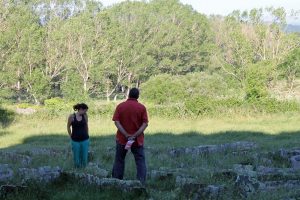
Eventually, after discovering the serpentinite rocks from the old house and going to see some of the petroglyphs in the area, it all began to make sense. Serpentinite is a type of metamorphic rock caused by low-temperature alteration of ultramafic oceanic rocks, mostly deep in the mantle and under the oceans. However, in some places, such as Galicia and northern Portugal, serpentinite is found close to the surface. It gets its name from its greenish hue and crystalline veins that resemble snakeskin. Serpentinite is magnetic due to its high magnetite (iron oxide) content. So, Ophiussa is, quite literally, the land of serpentinite rock.
The early inhabitants of Ophiussa would have been far more sensitive to the energetic currents of the earth than we are today, because there was no EMF or other pollution and they would have lived close to the earth and the cycles and physics of Nature. However, it is still possible to attune to the psychic and electromagnetic fields of the earth in places such as Galicia, that are relatively unpolluted. I’ve described how I feel intention works as a magnetic anchoring into the earth in an earlier post: Magnetic Intent. This anchoring entrains my biorhythms, biophotons and imagination into those of the earth, specific to where I’ve rooted. It’s my job to set my intention and thereafter I’m guided in a very practical way, in my dreams and through my ordinary senses to the healing plants, to the people I can connect with and to the resources I need, for example. This is a land of subsistence farmers, where families raise, slaughter and butcher their own animals, grow most of their own vegetables and cut trees by the moon for winter fuel. People do seasonal work and part-time work for extra income, a little here and a bit there. Our neighbour told us with great pride how he’d built his tractor from old parts and he had never traveled more than 50 miles from the family home. There are families have lived in the same village for 400 years. Ties to the land have generated strong traditions that are only now turning to dust, as the young people are siphoned off to the cities; they don’t want the hard lives of their parents and grandparents and who can blame them for that? Many villages are abandoned and death visits more frequently than the parish priest – I’m not sure who is more welcome.
There is a strong protective force that emanates from this land and it’s probably one reason why this region has remained so unspoilt. The abandoned villages stand for resilience rather than ruin. There is no gentrification here and you can hear the innocence in the giggle of the old women in a blue pinny and you see it in the gummy octogenarian with a glint in his eye, chatting up the barmaid. Nothing is lost; the salt of everything that has ever lived spices the earth.
A POBRA DO BROLLON VIDEO OFICIAL from pinancho audiovisuais on Vimeo.
The petroglyphs we’ve seen here are very similar to those found in other parts of the world: serpents, spirals, labyrinths and hunting scenes. It’s hard to date petroglyphs. They are mostly said to have been made in the Bronze Age, which is defined as the period between the Stone Age and the Iron Age, between 5000 and 1000 BCE, but that’s not really certain. Clearly, the ancient artists who created these images wanted to communicate something that was important to them and that would stand the test of time, just as with the larger monuments, like the Sphinx and the pyramids, but the early European pagans were not interested in buildings. It’s tempting to project our sense of impending danger onto these artifacts and think of them as a warning from the distant past, but the truth is that, we can never know what our ancestors intended. However, we can just let these images speak for themselves.
Of all the design elements, it’s the labyrinth that captures your imagination. Especially when you find variants of the same labyrinth design carved into rock faces by prehistoric peoples all over the world!
 Petroglyph Val Camonica, Italy
Petroglyph Val Camonica, Italy Petroglyph Tintagel, Cornwall
Petroglyph Tintagel, Cornwall Petroglyph Mogor, Galicia
Petroglyph Mogor, Galicia Petroglyph Goa, India
Petroglyph Goa, India Petroglyph Long Lake, Oregon
Petroglyph Long Lake, Oregon Petroglyph, Maze Rock. California
Petroglyph, Maze Rock. California Trojaborg Sweden
Trojaborg Sweden Solovetsky Islands, Russia
Solovetsky Islands, Russia Skarv Island, Gotland, Sweden
Skarv Island, Gotland, Sweden Kola Peninsula, Russia
Kola Peninsula, Russia Rajasthan, India
Rajasthan, India
Everyone knows the story of the hero Theseus, who adventured into the labyrinth to slay the Minotaur – an unnatural creature, a man with the head of a bull to whom children had to be sacrificed for him to devour. The word labyrinth is said to come from the Greek labyrinthos, but the origin of the Greek word is not known. Some say it derives from the Greek laura, meaning narrow street or passage and others from labrys, the double-headed axe of the Minoan priestesses. The linguistic distinction between maze and labyrinth appeared some time in the 14th century, but the terms were still used interchangeably until the middle of the 20th century, when the latest labyrinth revival took off. It is now accepted that a labyrinth is a serpentine path that is unicursal in nature and with only one entrance-exit. A maze is an intricate network of paths which is multicursal, with blind-alleys and multiple entrance-exit points and usually designed as a puzzle. The word ‘maze’ is believed to come from a Scandinavian word for a state of bewilderment or confusion, where the English word ‘amazing’ comes from. The prehistoric labyrinth petroglyph makers did not appear to suffer from this confusion.
Labyrinths predate religion. The Christian church began to include labyrinths in the 11th and 12th century, the most famous is in the Cathedral of Chartres, a former druid stronghold. Chartres also has an equally famous Black Madonna – signifying the connection to the earth. Did organised religion co-opt the labyrinth or has this archetypal symbol slowly bled into the religious mindset? In recent years the alternative media has been running stories on parabiosis, adrenochrome and studies on how transfusions of young blood have been shown to reverse ageing. It’s the modern way of sacrificing our children, the future of our species, to a parasitic monster that has many heads and names….you know who.
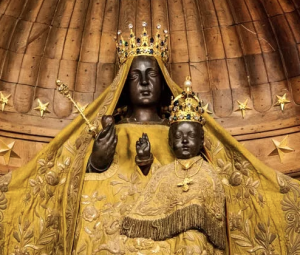
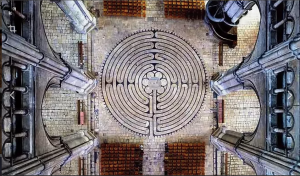
To me, the labyrinth is a simple diagram of the warrior path, the way of living intentionally: it reassures me that when I set myself a task or goal that takes me into the unknown, that I will return to the ordinary world with something worthwhile – it is not a one-way ticket. The journey inward requires intent, persistence and courage (the masculine drives), but I know that so long as I keep focused on my goal I cannot get lost, the serpentine path guides me and nature (the feminine principle symbolised by Ariadne) has given me all the weapons/skills I need to complete the task and bring the achievements back into the ordinary world.
The labyrinths etched into the rocks here are testimony to the fact that the people who made them knew the magical my-story of the individual path. There is, in fact, nothing mysterious about this process. Whether you are setting out to solve a problem, defeat your enemies, create something new, improve your health or transform your life in some way, you are always starting at the beginning of the labyrinth and venturing into the unknown and, whether you know it or not, you are always guided by the Great Mother on this visionary path. The ripple effect of the labyrinth makers still plays out in the lives of the people who live close to the land today. When I look at the image of the labyrinth, it reminds me of this process and puts a spring in my step. How do we eliminate the toxins and parasites that plague us all? Make that a goal and place it at the centre of the labyrinth, follow the path and you cannot fail. Perhaps this is why the labyrinth used as a protective talisman by the Celts, who lived here long after the Oestremnios, as well as by many other pagan people all over the world.
Re-imagining the Serpent
The serpent underlies the occult workings of the labyrinth. The Judeo-Christian tradition demonized the serpent to break the connection to the older polytheistic or pagan practices. In older traditions the serpent represented the feminine creative nature and in order to replace it with a single male (fundamentally insecure) controlling deity it had to become a creature that instilled fear and loathing, rather than reverence. There is also the feminine destructive force to consider too. The bible writers invented the snake-oil salesman to turn people away and keep them away from the Great Mother, our source of power. The ‘Reptilian Agenda’ is another strand of the world domination plan designed to keep people looking for ‘the Truth’ about something that cannot exist because it is against Nature.
There is no route back to the days when much of humanity lived within the coils of the Great Mother, even if that could be considered desirable. You cannot re-member a creature that never had limbs. This notion points to the correspondence between the serpent and the unconscious Wisdom that is incapable of becoming conscious, but is often sensed as the supernatural. The mainstream mindset gives you two options for interaction with the Supernatural: ridicule or fear. If you have to interact with the mainstream, then throwing some ridicule back at it is a healthy option, but I prefer to spend my time and energy in the natural world. There are many niches in the world, where the unconscious doesn’t seem to have much difficulty in making itself known and the re-imagining can take root and it’s a really good idea to find one, if you can.
The many artworks, myths and ancient texts that tell of the divine serpent, describe it as a symbol or attribute of a deity, or Supernatural power that is calling to be recognised, tamed and absorbed anew in each generation. Serpent symbolism often signifies healing, such as Asklepios the Greek god of medicine who grew so skilled in the craft that he was able to restore the dead to life. This was a crime against the natural order and so Zeus destroyed him with a thunderbolt. He is usually depicted holding a staff with a snake coiled around it, which became the symbol of modern medicine, the caduceus. Of course, serpent wrapped staffs were all the rage in ancient days, Hermes had one, so did the Sumerian god Ningizzida (ancestor of Gilgamesh or another name for kundalini?) and the bible is littered with rods and serpents too. After his death Asklepios was honoured with a place amongst the stars as the thirteenth constellation Ophiuchus, the Snake Tamer.
There are too many examples of symbols of ‘serpent power’ in the ancient world to go into here; from Minoan snake wielding goddesses, to Egyptian tombs, to the Midgard serpent, the Ouroboros, Coatlique, the Aztec mother goddess with a double rattlesnake head and skirt of writhing serpents and Quetzalcoatl, the plumed serpent god (Kukulkan to the Toltecs). The Canaanite mother goddess, Asherah, associated with lions, sacred trees and serpents. Shiva is known, among other titles, as the King of Snakes, Vishnu dreams on a bed of cobras. The serpent goddess is often associated with fertility and that is something for white Europeans to sleep on.
Folklore from all over Galicia, Portugal and Asturias tells the same stories of the moiras or mouras encantadas, supernatural female beings, who are guardians of the thresholds to the invisible world but are compelled to hide their supernatural powers in a state of trance like sleepwalking. They are said to appear most often as beautiful maidens combing their long golden, red or black hair, sitting near the springs, bridges, rivers, wells, caves, old buildings, castles or hidden treasures, waiting for some one to come along, usually a man, to break the spell they are under. There is also a young woman who is joyfully pregnant, looking for a midwife to help her give birth and occasionally an older woman, who is considered to be the Mistress of the Megaliths, who makes rock formations and dolmen with a flick of her little finger. Snakes are said to announce the presence of a moura and some mouras take the form of half woman, half snake, like the naginis of Hindu mythology. Others are shape shifters, but they are always benevolent and never tricksters. Legends say that if a man kisses a moura, she will give him treasures and make him a king and grow old with him and when he dies, she will regenerate her youth and find another man to make sovereign. Many researchers consider the mouras to be a local variant of the Greek moiras, the three sisters who determined the fate of gods and men. I’m not doubting the validity of their research, by any means, but this notion feels as though it comes from intellectual research, rather than through interaction with the land. To me, the mouras do not seem to be involved in fate in that way. I see them as the elemental spirits of the land, the black hair representing the rich earth of the forest floor, the red and the gold the iron ore and gold that the Romans plundered. If you see the moura, really see one in all her glorious supernatural beauty and fall in love with her and honour her, she will give you the keys to the magical kingdom, along with riches to sustain you for the rest of your life.
Wisdom, Vitality and Protection
In writing this introduction to Ophiussa, the Land of Serpents, I’ve attempted to share something of what it’s like to fall in love with the land and to show how She loves you right back with Super-abundance. There is more to come. My desire is for you to fall in love with the land where you live. This is not a romantic delusion, but the basis for survival. You can prep as much as you like, it’s a good idea, but if you don’t open your heart to the Supernatural Wisdom of the planet where you live and invite Her to hone your instincts and sharpen your intellect and your creative imagination, you are going to be standing on the beach when the tsunami hits.
At this time, you are either creating your own reality or living a reality created for you by those who do not have your best interests at heart. According to Philip K. Dick — ‘Reality is that which, when you stop believing in it, doesn’t go away.’
More about generating reality on my other blog, Ophiussa.org
Salvage Greenhouse
You May Also Like
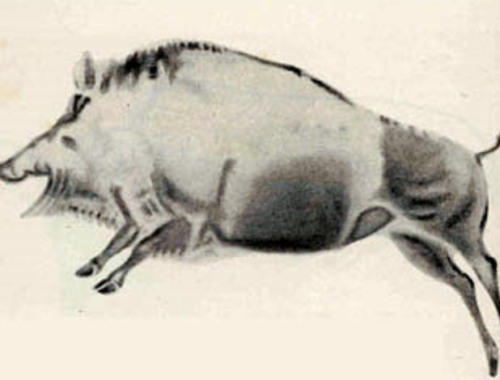
Wild Boar Medicine
November 26, 2023
Real-eyesing the Tulku
February 21, 2024
